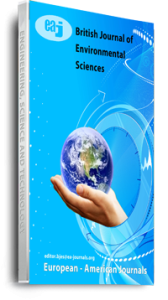Rapid urban population expansion, high living costs, and a need for affordable housing all encourage migration to Akure’s peri-urban districts. This drive has led to increased land utilization for housing development in peri-urban areas. This study evaluated housing quality in the peri-urban areas of Oba-Ile, Oda, and Ibule-Soro in Akure. Households were the unit of analysis, with one household head per building selected for questionnaire administration. Based on an average household size of five people per family and five households per building in Ondo State, the total number of households in the three locations was 47,110. From the 47,110 households, 800 households (1.7%) were randomly selected for the questionnaire administration. Data from the field survey were subjected to statistical analysis. The results revealed that some buildings were structurally unsound; most buildings had corrugated iron roofs and lacked sanitation infrastructure; and open defecation was commonplace, particularly in Ibule-Soro. These findings call for better urban planning and investment in basic amenities to improve housing quality and living standards in peri-urban areas.
Keywords: Akure, Examination, Housing Quality, Peri Urban Areas

